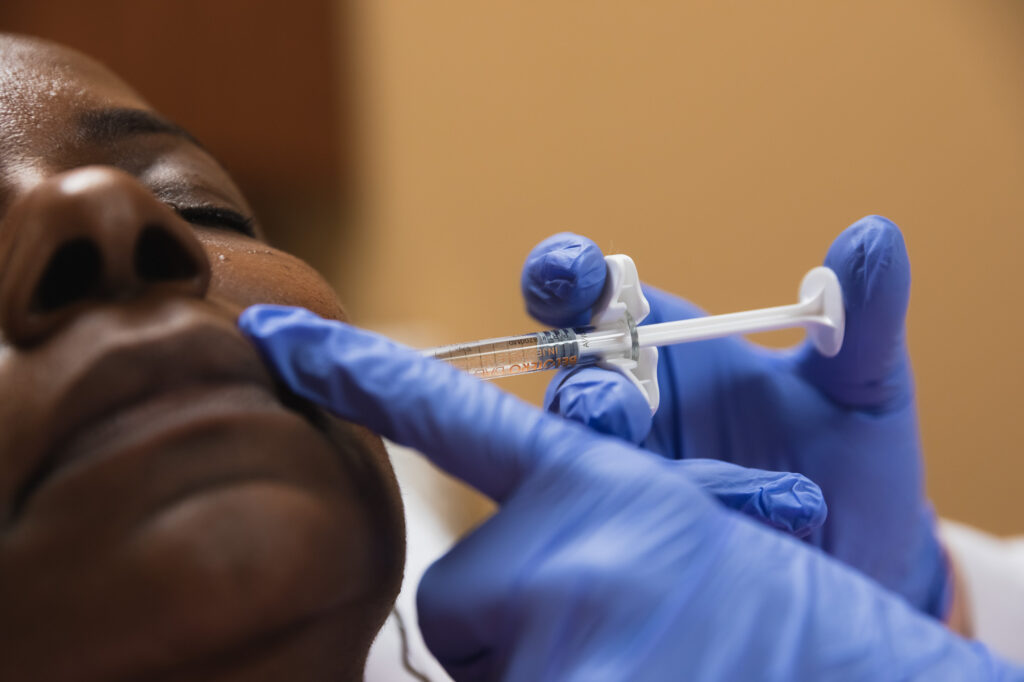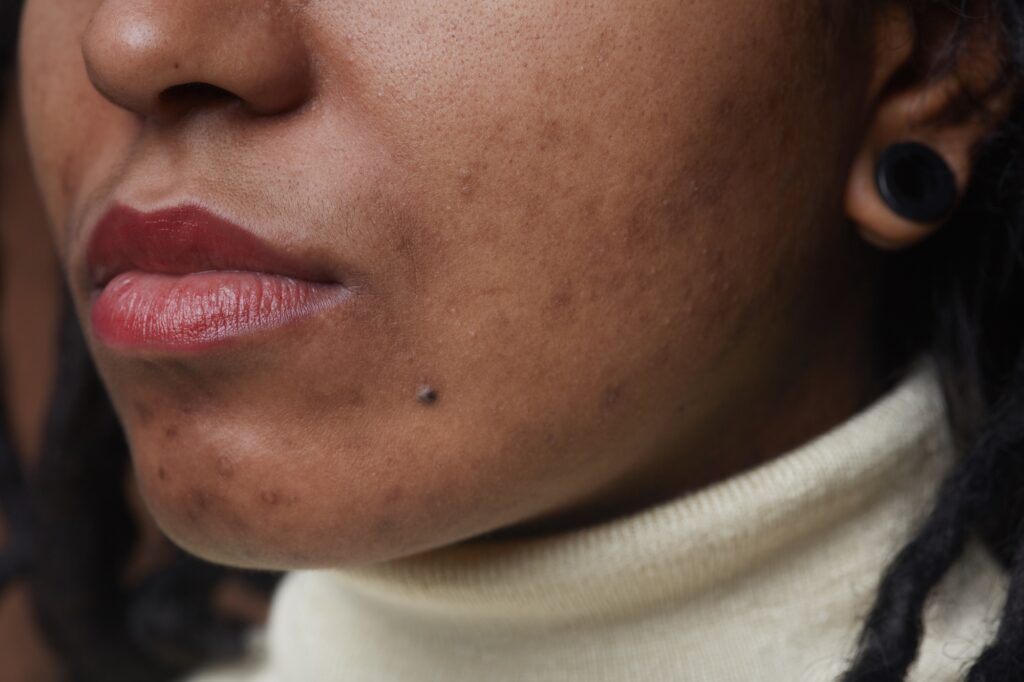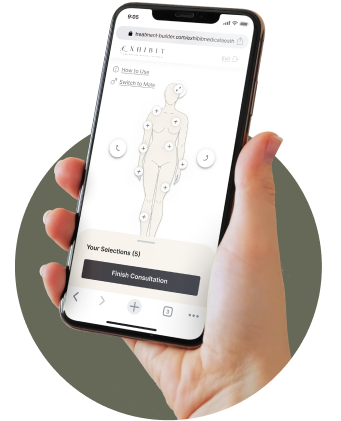
Botox & Dysport, celebrated for their anti-aging prowess, have become stalwarts in the beauty world. Yet, beyond their famed cosmetic applications, they harbor significant therapeutic potential. These treatments are now pivotal in managing an array of medical ailments. Exhibit Medical Aesthetics is a guiding light for those navigating this intriguing intersection of wellness and beauty. This article goes beyond the surface, exploring the remarkable medical roles Botox and Dysport play, especially in addressing neurological, gastrointestinal, and various other health challenges.
History and Development of Botox and Dysport
Exploring the rich histories of Botox / Dysport, their transformation from mere toxins to therapeutic powerhouses stands out impressively. While we applaud their present-day roles, we look forward with excitement to the unfolding chapters of their captivating tales.
- The Accidental Discovery: In the 1820s, Dr. Justinus Kerner pinpointed a toxin in spoiled sausages that caused food poisoning. This toxin eventually became the foundation for Botox.
- Naming the Toxin: By the late 1800s, Dr. Emile van Ermengem isolated the bacteria producing this toxin and named it Clostridium botulinum, leading to the term “botulinum toxin.”
- Medical Potential Recognized: In the mid-20th century, scientists recognized the toxin’s potential for muscle relaxation, which could treat overactive muscles and conditions like strabismus (crossed eyes).
- FDA Approves Botox: Fast forward to 1989: The U.S. FDA approved Botox (botulinum toxin type A) for therapeutic uses, marking its transition from toxin to treatment.
- Dysport Enters the Scene: Originating in the UK in the early 1990s, Dysport (a type of botulinum toxin) got recognition for its similar muscle-relaxing properties and became a competitor to Botox.
- Cosmetic Revolution: In 2002, Botox gained FDA approval for cosmetic use to treat frown lines, thus revolutionizing the cosmetic industry. Dysport followed suit with its cosmetic approval in 2009.
- Botox and Dysport’s Expanding Horizons: Researchers have continuously explored new therapeutic applications for these treatments, leading to their use in conditions ranging from migraines to excessive sweating.
- Safety and Refinement: With increasing popularity, scientists worked diligently to refine techniques, ensuring both Botox and Dysport remained safe and effective options for various treatments.
- A Bright Future: Today, as the medical and cosmetic worlds continue to embrace Botox and Dysport, research continues to unveil even more potential uses and benefits for patients around the globe.
Botox and Dysport in Neurological Disorders
Botox / Dysport, while often associated with cosmetic transformations, truly shines in its capacity to treat an array of neurological challenges. Their versatility showcases the power of innovative medical science and the potential for improved patient quality of life.
- Tackling Muscle Spasms: Botox and Dysport have proven abilities to relax overactive muscles, offering relief to those who experience painful or disabling muscle contractions.
- Cervical Dystonia Solution: These treatments have become game-changers for patients with cervical dystonia, a painful condition where neck muscles contract involuntarily, causing abnormal postures and neck movements.
- Combatting Spasticity: People with conditions like cerebral palsy, stroke, or multiple sclerosis often suffer from muscle stiffness or spasticity. Botox and Dysport have emerged as effective treatments, reducing stiffness and improving mobility.
- Blepharospasm Relief: Uncontrolled blinking or lid spasm, known as blepharospasm, can be debilitating. By using Botox or Dysport, patients can regain control over their eyelids and return to a more comfortable daily life.
- A Balm for Chronic Migraines: Not just for muscles, Botox especially has carved a niche for itself in migraine management. Regular treatments can lead to fewer and less severe headache days for chronic migraine sufferers.
- Hemifacial Spasm Management: Uncontrolled muscle contractions on one side of the face, or hemifacial spasms, can find relief with these treatments, allowing patients to regain their facial symmetry and confidence.
- Safety and Monitoring: While Botox and Dysport offer numerous benefits for neurological disorders, it remains crucial for patients to receive these injections from trained professionals and report any unusual side effects.
- Future Prospects and Research: As the understanding of these treatments deepens, researchers are continually exploring newer applications within the realm of neurology, promising more solutions.
Benefits of Botox and Dysport
Botox / Dysport are both injectable neurotoxins derived from the bacterium Clostridium botulinum. They are used primarily for cosmetic purposes but also have therapeutic applications. Here are the benefits of Botox and Dysport:
Cosmetic Benefits:
- Wrinkle Reduction: The primary cosmetic use of Botox and Dysport is to reduce the appearance of wrinkles, especially dynamic wrinkles (those caused by facial muscle movement).
- Brow Lift: Strategic placement of the injections can result in a mild lift of the eyebrows, producing a refreshed and alert appearance.
- Gummy Smile Correction: When someone’s smile shows too much gum, Botox or Dysport can reduce its appearance.
- Jawline Slimming: In people with hypertrophic (overdeveloped) masseter muscles, injections can reduce the muscle size over time, leading to a slimmer jawline.
- Neck Banding: Both treatments can reduce the appearance of vertical neck bands caused by the platysma muscle.
Therapeutic Benefits:
- Migraine Relief: Regular Botox injections are an FDA-approved treatment for chronic migraines and have been found to provide relief for sufferers.
- Hyperhidrosis Treatment: For those with excessive sweating, Botox can be used to reduce sweat production in areas like the armpits, palms, and soles of the feet.
- Muscle Spasticity: Botox is approved for treating muscle spasticity in conditions like cerebral palsy or after a stroke.
- Overactive Bladder: It can be used as a treatment for individuals who suffer from an overactive bladder and incontinence.
- Blepharospasm: Botox and Dysport can treat uncontrollable eyelid twitching or spasms.
- Strabismus: They can treat certain eye misalignment conditions.
- Bruxism: Some people find relief from teeth grinding or clenching (bruxism) with Botox injections in the masseter and temporalis muscles.
Comparing Botox and Dysport:
While Botox and Dysport serve similar purposes and have many of the same benefits, there are slight differences between the two:
Onset: Dysport might act faster, with results appearing in 2-5 days compared to Botox’s 4-7 days.
Diffusion: Dysport tends to spread or diffuse more than Botox. It can benefit treating larger areas and increase the risk of unintentional spread to undesired locations.
Unit Differences: The units of measurement for Dysport and Botox are different, so that direct dosage comparisons could be more straightforward.
Duration: The lasting effects of both treatments can vary based on the individual, but both generally last for about 3-6 months.
Consult a Professional
Botox / Dysport has cemented its position as a versatile and transformative treatment in cosmetic and medical arenas. By staying informed about its myriad benefits and potential side effects, individuals can harness its powers to their best advantage while maintaining safety and well-being. Consulting with a professional medical esthetician will provide clarity and guide individuals toward the best treatment option.
Takeaway
Botox / Dysport extends beyond cosmetic applications, providing remarkable relief for various medical conditions. As Exhibit Medical Aesthetics, we are committed to your health and beauty, harnessing the full potential of these treatments in a safe, professional environment. We’re here to guide you if you seek transformative solutions for aesthetic enhancements or medical relief. Don’t let uncertainty hold you back. Contact us or book an appointment today to discover how Botox and Dysport can elevate your quality of life. Embrace the change with Exhibit Medical Aesthetics—where transformation begins.


